Exhibitions provide a unique opportunity to display your product and business to large numbers of potential customers.
A clear idea of what you are trying to achieve, and how to go about it, helps you maximise the impact.
aims
Decide what your priorities are and quantify your aims. You may have several distinct objectives.
- Collect leads to follow up, or compile a mailing list.
- Make direct sales at the exhibition.
- Launch and promote a new product. Trade shows provide an ideal opportunity to contact the specialist journals in your field and generate press coverage for your new product or service.
- Meet and entertain customers. In a day or two at an exhibition, you may get more chance to talk to people who use your products than you will have in the rest of the year. E Find agents, distributors or other businesses to work with.
the exhibition
The key consideration is which exhibitions your target customers will attend and read about.
What is the exhibition’s track record?
Ask for an analysis of the previous year’s attendance.
How many decision-makers from your target market were present?
Look at the previous year’s catalogue. How professional is it?
Which companies were exhibiting?
Ask your competitors what they got from attending – most people will tell you.
When is the exhibition?
Is that a good time for your business to be disrupted by the extra work?
Could you cope with any extra business the exhibition generates?
How far in advance will you need to plan?
Where is the exhibition?
Is the location convenient for you and your target customers?
What size is the exhibition?
Smaller and more specialised exhibitions may represent better value for money.
How much publicity does the exhibition receive?
Where will the organisers advertise the event?
Do they have any links to the media (eg magazine publishers that will feature them)?
What else will the exhibition offer?
What services will the organisers provide?
What special events will there be?
Will your trade association have a stand for members there?
How much does it cost?
Exhibition organisers charge rent on the floor space. Total costs may be around two to four times as high as the rental cost.
space
Make sure you book a space suitable for your proposed display.
Stands with more frontage are likely to attract more attention.
Different locations within the exhibition hall may have different costs.
Ask for a map of the hall. Ask the organisers which parts of the exhibition have attracted the most attention in the past. You can see how the crowd moves by attending an exhibition at that venue.
Book early to ensure that your name is included in all the organisers’ promotional materials.
The organisers usually require a deposit when you book and full payment before the exhibition starts.
Arrange electricity, lighting and any other supplies you require.
Many organisers require you to use their own contractors to install these. Plan your electrical requirements carefully. For example, are there going to be enough sockets?
design
Exhibition organisers usually offer a ‘shell scheme’.
At a minimum, this includes the back and side walls of your stand.
Extras which may be included are: Floor covering. Board with your company name. Electrical supplies and lighting. Furniture. Display racks. Shelving. Telephone. Other office items (eg waste bins).
You can use your own designer.
A designer is more likely to produce a distinctive stand. A designer is essential for a space-only site.
Check what the organisers’ rules are. In particular, you will be responsible for health and safety and any fire risk your stand may represent.
Brief the designer on what you hope to achieve. If you plan to exhibit regularly, ask for a stand that can be taken apart and used again.
Confirm the time and costs schedule in writing.
Make sure your stand design is effective.
You will have only a few seconds to attract the attention of people passing the stand. Keep it simple.
Have one central theme rather than trying to crowd everything onto the stand.
Allow space for visitors.
Keep the front clear and provide a focal point at the back to encourage them into the stand.
Avoid building a ‘corporate fortress’ to mark your territory. Raised floors, walls and other constructions often distance you from the visitors.
promotion
Let target customers know about your stand.
Ask the organisers for free complimentary tickets to send to selected customers.
Consider a press release. Briefly describe your stand and your product. Include pictures and samples if appropriate. Give details of how they can contact you for further information.
Consider using advertisements or direct mail to announce your presence at the exhibition.
Make the most of the organisers’ PR and promotional materials.
Ensure that your name appears in the catalogue. You should be offered a free listing, and you may want to advertise as well.
Ask the organisers what their PR plans are and whether they will have a press office you can use for your own PR. Tell them if something about you is particularly newsworthy.
Offer to take part in special events where you can gain extra exposure. For example, by speaking at an exhibition seminar.
the stand
Plan the details well in advance.
When will you set up the stand?
Where will your packing materials be stored?
When will electricity supplies, lighting and any special requirements be installed?
Have you got an adequate supply of brochures, leaflets and business cards?
Where will you keep them?
How will the stand be kept clean and tidy?
What are the security arrangements?
Does your office insurance cover the exhibition?
Will there be refreshments for your team and visitors?
Plan your message.
How will you respond to different types of visitors?
What information will you give out to students and other visitors who are unlikely to be customers in the near future?
What will you say to journalists or VIPs who visit the stand?
Who will look after them?
How will you handle competitors who are looking for information?
– Prepare briefing notes for all employees.
The right employees are essential to create a good impression.
Always appoint a stand manager.
Make this person responsible for timetabling and for briefing everybody involved.
Choose personable and knowledgeable employees. Ideally, your stand should always have one sales expert and one technical expert.
Allow for breaks. If the same people are on the stand all day, they will become tired and jaded.
Employees should be smart and punctual. You may want to give them incentives according to the number of leads they generate.
Good selling technique is vital .
Attract attention to the stand.
Activities like displays and demonstrations will help generate interest in your stand. Activities visitors can participate in are likely to be more effective.
Prize draws can be a good way of collecting names and addresses of potential customers.
Refreshments perk up tired visitors and encourage them to spend more time on your stand.
technique
Most exhibitors aim to make introductory contacts rather than to complete sales on the spot.
Respond to visitors.
A visitor should be allowed to browse briefly and then be approached.
Employees must not hide at the back of the stand chatting among themselves.
Start by finding out what kind of visitors you have.
Ask whether they use your kind of product and what their interest is in your stand.
Ask what their roles are in their organisations and what their businesses do.
Find out whether a visitor has purchasing power or influence.
Stress the benefits of your product.
If a visitor is a potential customer, you must create enough interest to pave the way for a follow-up meeting or call.
Find out what the visitor’s needs are.
Explain how your product can satisfy those needs.
Make arrangements to follow up.
A visitor should not leave your stand until you have agreed what the next step will be,
Make sure you record the name, job title and area of interest of each prospective customer.
Record any information you need for following up the enquiry. Who should you contact, when and how?
Arrange to get one of the organisers’ mailing lists and consider mailing everybody who attended, even if they did not come to your stand.
Your aim is to deal with as many visitors as possible. Five minutes should be long enough to interest the visitor, provide them with relevant information and make follow-up arrangements.
MORE
KNOWLEDGE
Get
in
touch
If you have a new project on the horizon or want to explore working with a new creative agency to support your team, give us a call (in English or Swedish!)

















